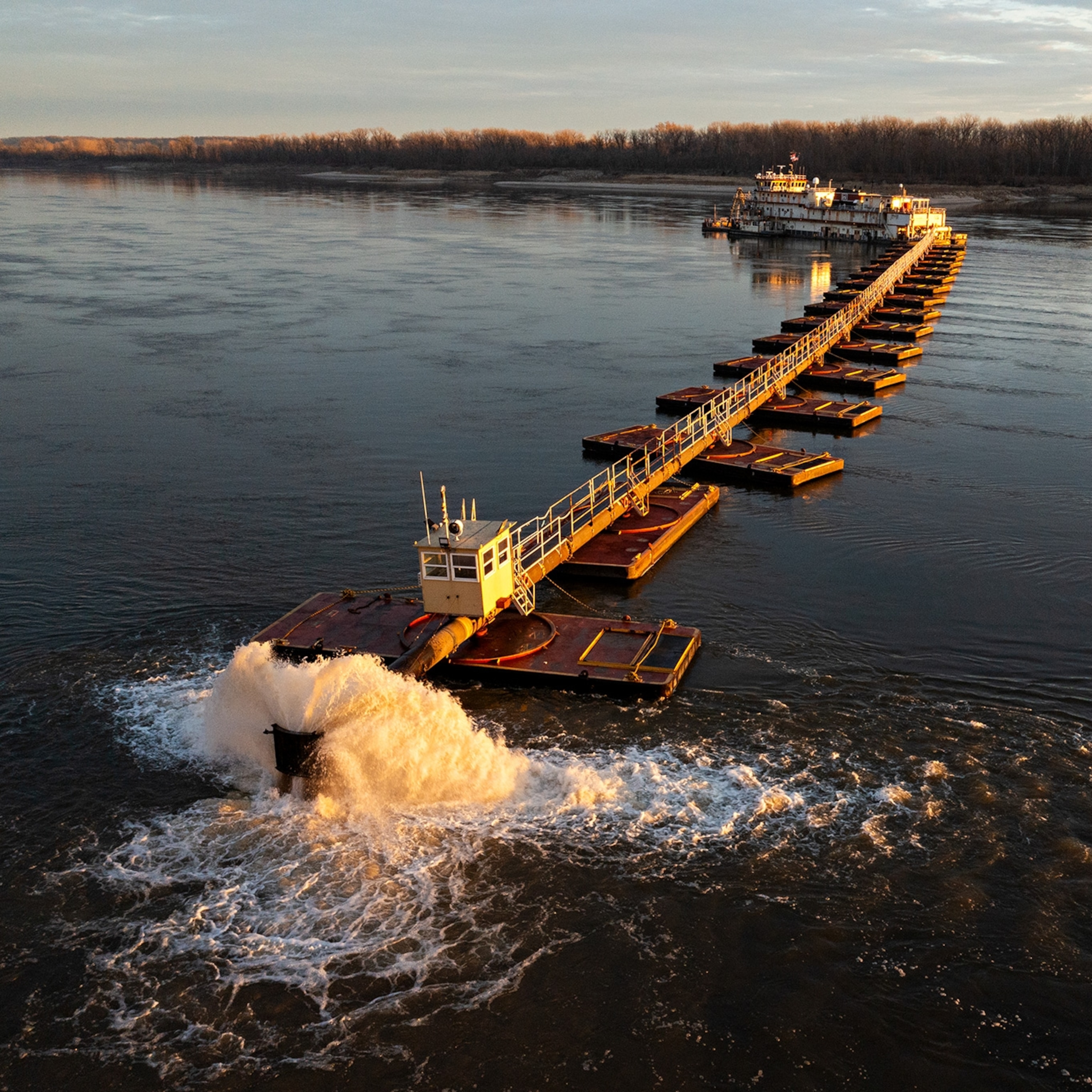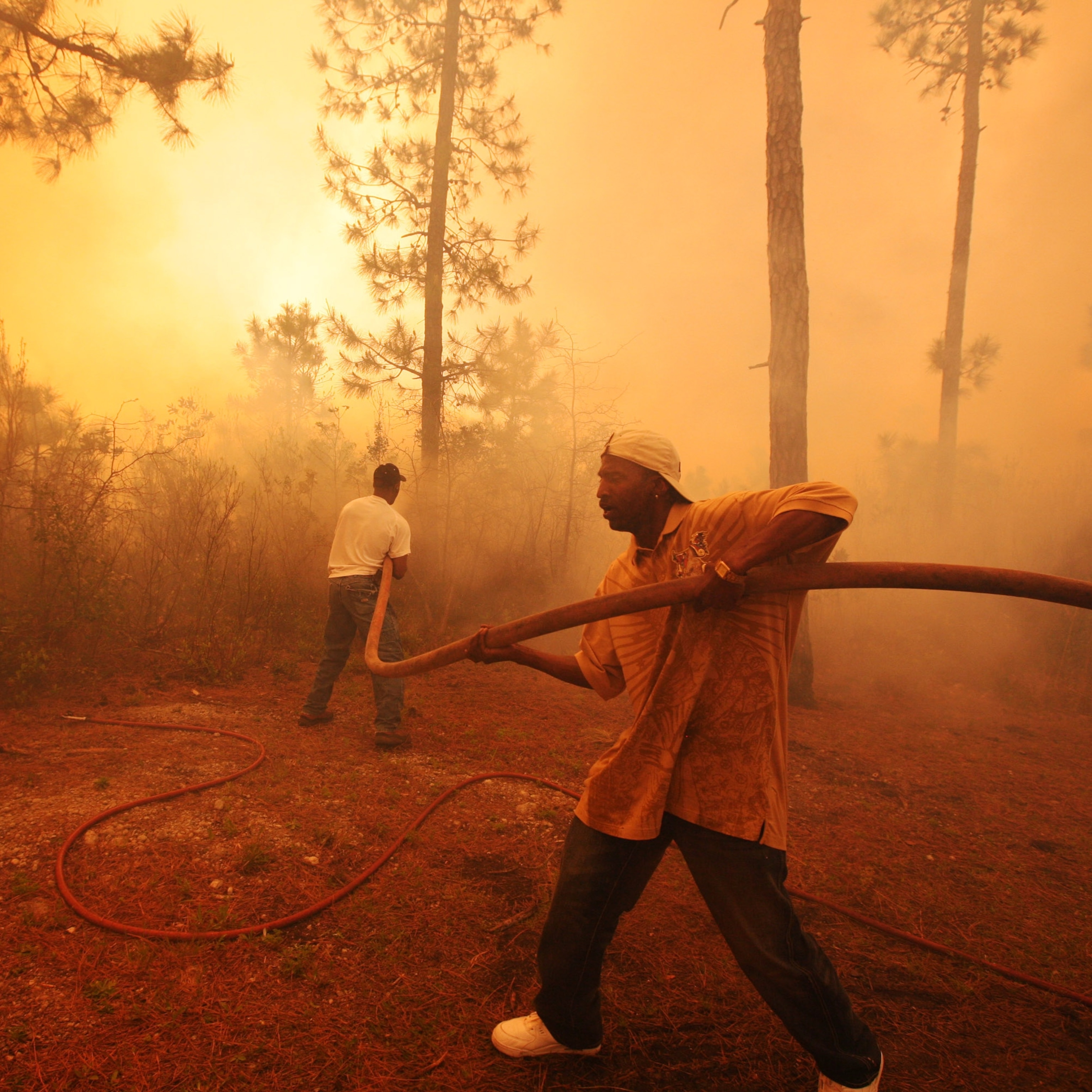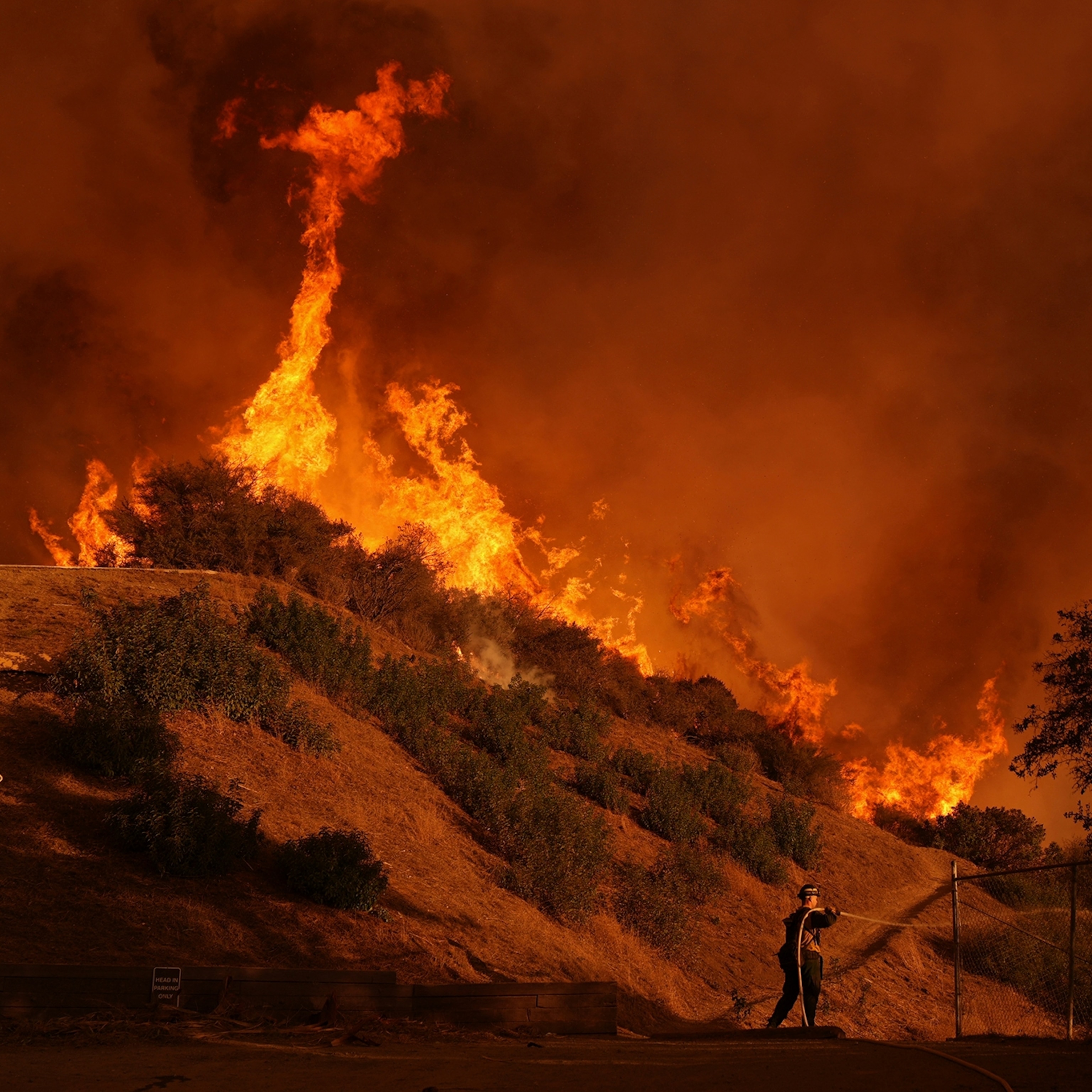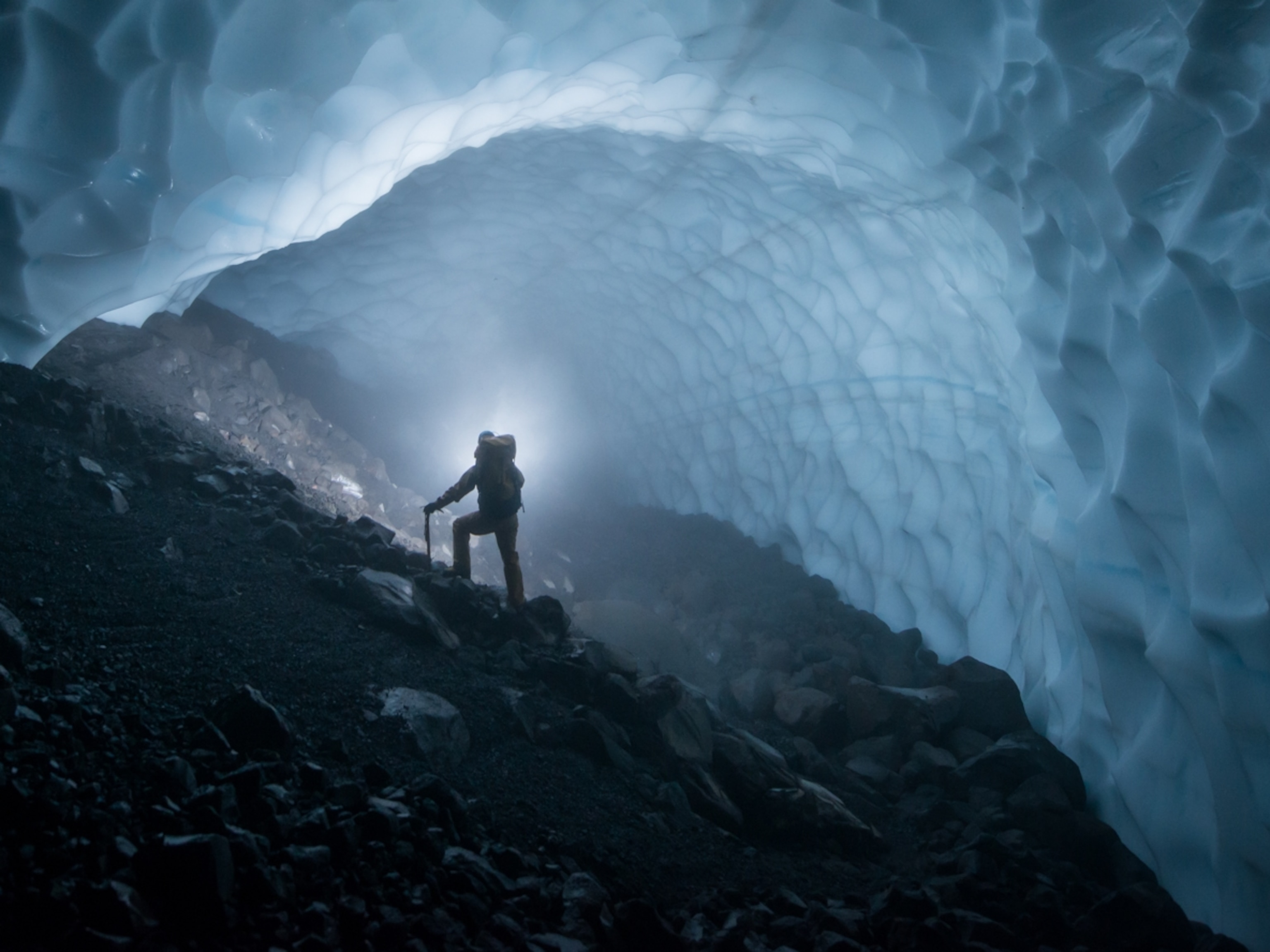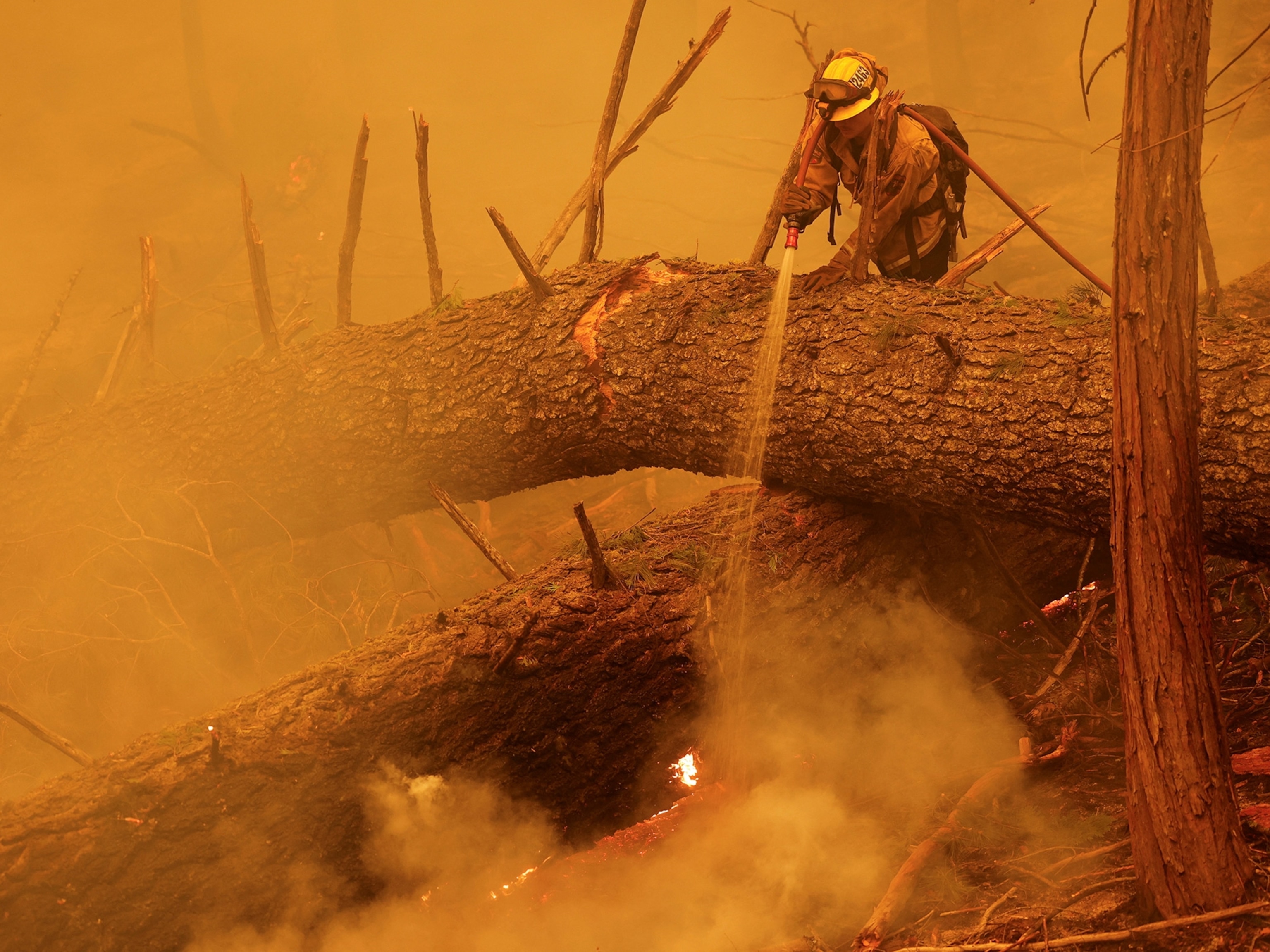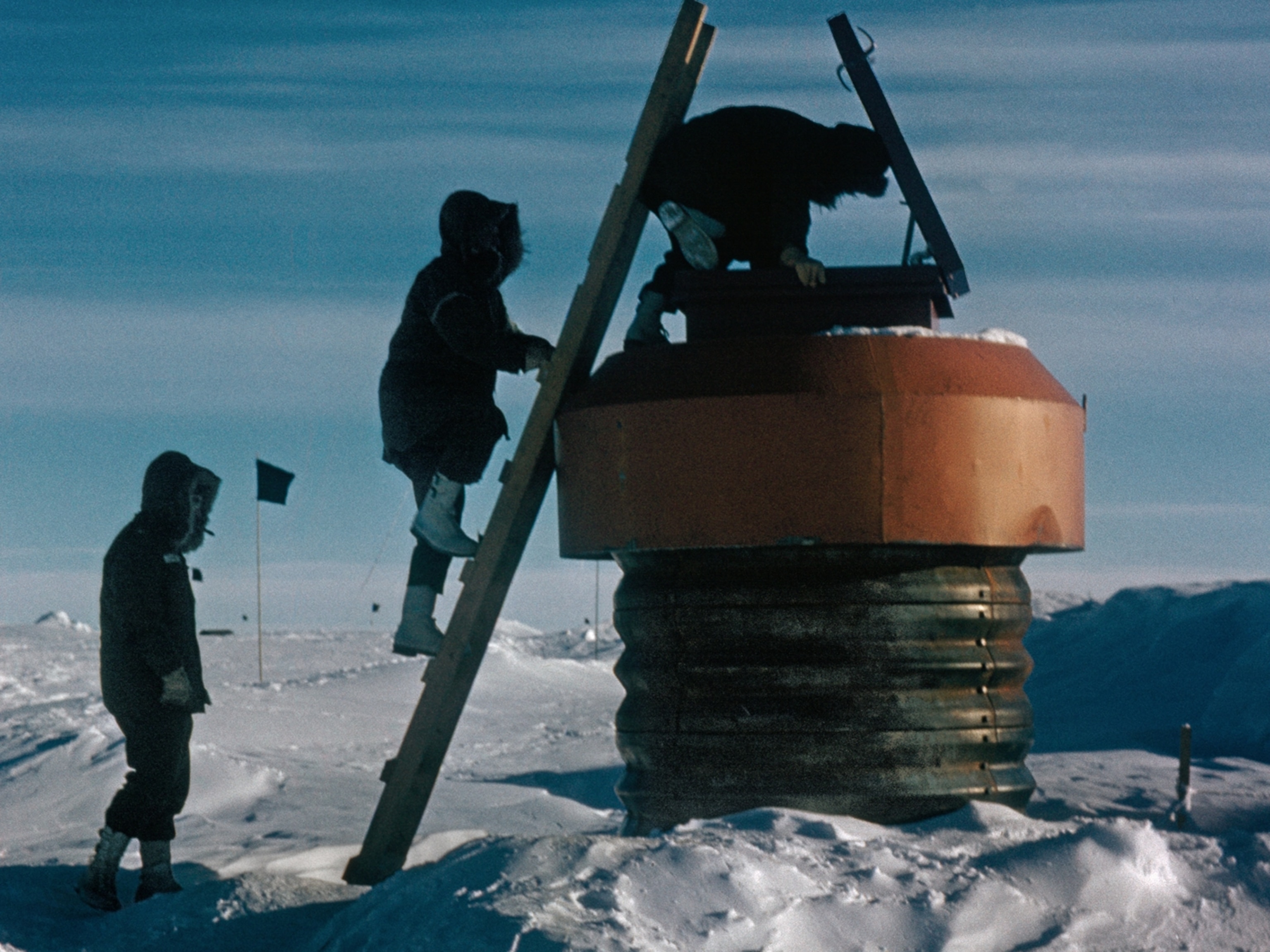
Highest weather station in the Andes will help scientists search for climate answers
The newly installed station will help Chile understand a historic drought with no signs of easing.
At a little over 19,000 feet above sea level on the Chilean mountain of Tupungato, Baker Perry and his fellow climbers were clobbered in the early morning hours by an unpredicted blizzard that pinned them in their tents with punishing winds and swirling snow. Perry, a climate scientist at North Carolina’s Appalachian State University, was philosophical as he recalled it.
“It’s part of the beauty of the mountains that it is so challenging. That’s one reason there’s not many stations up in some of these places,” Perry says. “We want to see it at its stormiest and at its most challenging as well. That’s part of the climate. We need to measure that.”

Perry is a co-leader of an international team that in February braved a global pandemic and a 15-day trek and climb through dense snow to install a weather station just below the summit of Tupungato, a dormant volcano in the southern Andes. Positioned where Chile meets Argentina, the weather station is the highest in the Southern and Western Hemispheres and will help scientists understand how rapidly the region’s climate is changing. The expedition was organized by the National Geographic Society and supported by Rolex’s Perpetual Planet Initiative.

With the temperature, wind speed, and snow depth data the station will gather, scientists hope to be able to better understand how central Chile and the country’s capital, Santiago, will fare as climate change exposes the region to more drought—like the historic one it’s in now—and shrinks the mountain water towers—glaciers and snowpack that act as stores of water.
“The stakes are really high now,” says expedition member Tom Matthews, a climate scientist at Loughborough University in the United Kingdom. “There are millions of people living downstream of these water towers. They are part of this system we know very little about in terms of how it may respond as the climate warms.”
Tupungato is Chile’s sixth highest peak and the tallest mountain in the Maipo River Basin, the watershed that supplies the 6.7 million people living in and around Santiago. With better data on how much precipitation is falling on mountaintops like Tupungato, government officials will know how much water they have to allocate in a given year.
“Since 1982, I’ve been studying glaciers. Within my lifetime we’ve seen tremendous changes in glaciers and snow cover,” says expedition co-leader Gino Casassa, the head of the Chilean government’s glacier unit.
In a dry year, Casassa says, two-thirds of the water feeding the Maipo River at the end of the summer comes from glaciers that are shrinking.
Central Chile is a Mediterranean eco-region, climatically similar to places such as California. It lies south of the Atacama Desert, the driest nonpolar place on Earth, and is wedged between the Andes mountain range and the Pacific Ocean.
Chileans are used to dry years periodically; 2010 was one such year. But in 2011, and then in 2012 and 2013, there was still little rainfall.
“Then came 2014,” which was also dry, “and that was suspicious,” says René Garreaud, a climatologist at the University of Chile, who was not involved with the expedition.




By 2015, Garreaud and his Chilean colleagues had determined the region was in what they dubbed a megadrought. It has endured for more than a decade. On average, since the drought began in 2010, a third less rain than usual has fallen each year. In 2019, the driest year since the drought’s onset, there was less than a quarter of the normal rainfall.
Some natural variability influences rainfall totals over a decade, Garreaud says, but there’s no doubt that climate change is contributing to the megadrought. In general, it’s expected to contribute to dry regions becoming drier and wet regions becoming wetter, and although Chile has experienced drought periods before, none have been this bad or lasted so long. Warming global temperatures have changed the weather patterns that once brought precipitation, and models suggest those patterns are likely to persist.
That’s bad news for central Chile, which relies on the mountain water towers in the Maipo River Basin for freshwater. According to a paper published in the journal Nature in 2019, water towers around the world, from the Andes to the Himalaya, are imperiled by climate change.
Two years ago, Perry and Matthews installed a weather station on Mount Everest, making it the world’s highest. The Chile trek was the latest National Geographic Society expedition to explore and research climate and environmental changes in some of Earth’s most fragile environments.


It took the team about 10 days to summit Tupungato, at more than 21,000 feet, and five days to descend. In the months before the trip, team members trained extensively. Perry spent hours climbing steep Appalachian trails in North Carolina with a heavy backpack. Southeast of Santiago, Casassa climbed the hills above his home.
Team members began their trip at 6,152 feet in an ecosystem with shrubs and bushes dotting the landscape. That scene quickly changed as they climbed over the next few days. It was a challenge.
The team consisted of Perry, Casassa and his colleagues at the Chilean water ministry, mountain guides, and muleteers, who move pack mules and horses up mountains.
“The horses had gone a couple days before us to try to make sure the trail was open, and the snow was so deep that the horses were up to their necks,” Perry says. Four riders on horseback plus mules carrying cargo advanced ahead of the team. Not only was the climb steep, but temperatures had warmed just enough that instead of being able to walk on the snow, the climbers fell through it. “At one point I took a step, and the next thing I knew I was up to my waist,” says Perry.
The weather station the team carried up Tupungato is a 120-pound, six-foot-tall, collapsible tripod made of aluminum. It is light enough to carry in bits and pieces in multiple backpacks but should be strong enough to withstand some of the world’s strongest winds. As the team struggled through the snow, Perry says, it became clear the horses would not be able to climb as high as the team had hoped. Casassa called in a helicopter to ferry the station the rest of the way up the mountain.
Securing the instrument near the summit required bolting the weather station’s tripod to rock and staking it with guy wires to keep it stable. The station is powered by solar-charged batteries and has an antenna for satellite communication. It already has clocked wind speeds of over 116 miles an hour, Perry says.
The scientists also installed temperature sensors three feet deep in the permafrost near the summit to track temperature changes in the frozen soil. The station will measure radiation, snow depth, and albedo, or reflectivity. Albedo is important because as less snow falls and the ice melts, it exposes lower albedo snow and eventually dark rock, raising surrounding surface temperatures and potentially accelerating the melt.
“As the climate warms, glaciers will retreat quite quickly,” Matthews says. “How quickly? We don’t know. Most observations have been made on the mountain at quite low elevations, so we lack information about what’s going on in the upper third.”
Determining how much freshwater Chile has locked in its mountains and when it might reach critically low levels are complex predictions, Matthews says. In the short term, the heat that accelerates snow and ice melt leads to more water, which can cause floods. But as melting speeds up, the glaciers eventually “get so small that even though they’re melting quite quickly, there’s less to melt,” and so there’s less runoff, he says.
Scientists refer to that transition point as “peak water,” when the short-term rush of water turns into a longer-term shortage.


Only two other high-altitude weather stations are located in the Maipo River Basin, and Casassa hopes the new station will become one of many he and his colleagues install throughout Chile.
As the United States and other countries, including Chile, commit to reducing the emissions that fuel climate change, central Chile nonetheless must prepare for worst-case scenarios.
Garreaud hesitates to say Santiago might hit a “day zero” for running out of water, as residents of Cape Town, South Africa, feared might happen there in 2018. He’s optimistic that the region can adapt, using water more efficiently and cutting down on consumption.
Northwest of Santiago, a private company is building the first general-use desalination plant that could provide water for drinking, agriculture, and mining. It’s one of many tools aimed at ensuring reliable freshwater for central Chile, says Sebastián Vicuña, a civil engineer at Chile’s Catholic University who researches how the country can adapt to climate change.
Local water utility companies and municipalities are using tactics such as damming a tributary of the Maipo River to store water and trucking in drinking water for those whose wells have run dry.
Models by Vicuña and his colleagues found that the drought should continue into mid-century and reliable drinking water for Santiago will come at the expense of supplying water to farmers. For now, Vicuña says, the glaciers are receding, but “they are still a very reliable supply of water every year, especially during the drought.” If the glaciers do eventually disappear, as is expected, that reserve of water will go with them.
The National Geographic Society is committed to illuminating and protecting the wonder of our world. Learn more about the Society’s support of its Explorers.
Sarah Gibbens is a staff writer for National Geographic. Photographer Armando Vega covers cultural and environmental topics.
This story was updated on Tuesday, August 10.
A version of this story appears in the September 2021 issue of National Geographic magazine.

